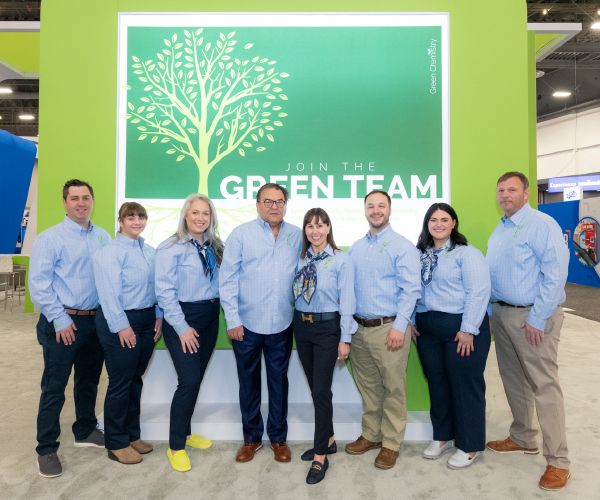
Popularity’s Perks and Pitfalls
October 13, 2023
8 minute ReadFrom market saturation questions to moratoriums, the car wash industry’s rapid growth is drawing attention, not all of it good.
Market saturation and moratoriums. These two concerns speak to the incredible growth the car wash industry has been experiencing. But, they might also have you tossing and turning at night, worrying about where they (and the industry) are headed. We get it. They are valid concerns and deserve a closer look.
However, saturation ultimately is not a simple yes or no question. The answer will depend on who is measuring saturation – and how they are measuring it. For now, though, these three industry experts say saturation has not yet hit the industry, but preparing for increasingly crowded markets also makes good business sense.
Dan Flatley, vice president of production management for DRB, said his firm’s data suggests the car wash market is at least a decade away from saturation nationwide, though individual states may be on different timelines.
“States with higher populations are further away from saturation,” Flatley said. “We predict that Texas, for example, won’t see saturation for possibly 20 years. Conversely, a lightly populated state such as South Dakota could see saturation within five years.”
Ryan Essenburg, president of Tommy’s Express Car Wash, said market saturation may be a concern in some areas, but “in most regions we’re not near saturation at this time. In addition, many new car washes are redevelopments, upgrades of in-bays, and new construction in underserved markets.
“There’s a lot of bad car washes also, so saturation and quantity aren’t always the same thing as serving the market,” he said. “Compare [it] to how you think of gas stations today – lots of those exist but with huge differences in quality.”
There are a lot of opportunities and markets where car wash operators with the right strategy and team can be successful. The car wash industry is continually evolving as are the methods for evaluating a suitable location.
What does saturation look like?
There are a variety of ways to measure market saturation across the industry. For instance, Flatley said what DRB wants to see when a new car wash is added to an area is an increase in the number of people washing and their washing frequency.
“We say that an area has reached saturation when that no longer happens – when the opening of a new car wash no longer increases wash volume in the area,” Flatley said.
Flatley said a key sign of saturation is pricing pressure.
“The beauty of the express exterior car wash model is that it has high fixed costs but low variable costs,” Flatley said. “Your cost structure doesn’t change significantly as the number of cars you wash increases. The problem is that when saturation exists in this type of business, you start to see destructive pricing … If we start to see car washes drop down to $3, $5 and $7 washes, that would indicate saturation impact, but we’re not seeing that.”
Some companies are using artificial intelligence programs and heatmaps to analyze market saturation. AI uses algorithms that take into account a variety of inputs, such as saturation, demographics, property values and traffic patterns. Heatmaps can help with the visualization aspect so it is easier to analyze and compare data at various locations.
Essenburg said Tommy’s is more worried about market pollution and old technology than market saturation.
“Imagine if every rollover location, self-serve location and every tunnel in existence washed 200 cars per hour at high quality – that would make us highly saturated,” Essenburg said. “But the fact is the majority of the washes today are dated, obsolete and [have a] low quality process and experience. That’s an unfortunate fact. Today the level of high-quality fast service to the market is not near saturation, though the quantity of existing car wash locations is high.”
Changing habits
Essenburg said the car wash industry has been considered in danger of saturation before, but since then it has become clear that more car wash locations means more people wash their cars more often. The industry’s ceiling for growth was much higher than most realized. Essenburg said building one brand in high density increases its value proposition, causing higher frequency of washing and utilization – and that raises the need for more brand density. “Density of one brand in an area is a good thing for the industry,” he said.
“For many years, we said the industry was saturated,” Essenburg said. “We were wrong in that belief because we didn’t realize we would change consumer habits this much with the unlimited model. In reality, every time we cut the pie by adding a new location, the pie grows.”
Flatley said membership saturation may present a larger risk today for car washes than market saturation. A membership saturation occurs when too much of a wash’s volume comes from memberships. When a wash reaches membership saturation, new members essentially just replace churned members. That means there is no net growth in memberships, Flatley said.
“This typically happens when your members make up more than 70% of your volume,” he said. “You need a pipeline of happy retail customers if you want to continue to grow your membership and your business as a whole. … You might want to employ a pay-as-you-go program where customers are automatically charged for their preferred wash when they arrive at the car wash. You can also implement loyalty programs and run special promotions.”
Concerns about saturation go hand in hand with the rapid growth that the car wash industry is seeing.
“It’s only natural to wonder when the capacity for new washes will run dry,” Flatley said. “Probably the biggest misconception we see is that a market is automatically saturated because they have x number of washes within a few miles. … if the number of people washing continues to grow as washes are added, the area has not reached saturation. Until that point, the volume of cars washed in an area increases every time a new car wash is opened. Essentially, we are training drivers in the area that using an express car wash is a valuable investment for their hard-earned dollars, so more and more people are inspired to wash and keep washing.”
Working against your worries
A perceived market saturation can create new opportunities. Essenburg noted that Tommy’s is doing a lot of redevelopment in the current climate. Four of its recent corporate store sites were existing tunnel car washes that the company tore down and rebuilt.
“I think this will be the biggest new trend – to copy what McDonald’s did and tear down old technology sites and start over,” Essenburg said. “In some cases, we’ve increased the volume ten times. Old self-serves have become good sites for Tommy’s Express, and gas station in-bays are great conversion opportunities, especially in urban areas.”
Flatley said car wash owners concerned about the prospect of market saturation down the road should focus on their brand, especially if they have plans to expand.
“Having a strong brand with a cohesive message across all your car wash sites will help you capture members in the first 90 days of opening a new site,” Flatley said. “This is a better predictor of how a new site is going to do than the proximity to other car washes. In fact, our data shows us that 16% of retail traffic can be directly attributed to the brand.”
A continued emphasis on research will help the industry understand the question of saturation with increasing clarity. As the industry becomes more sophisticated, that data will only grow more helpful and precise.
Essenburg said those seeking new markets for washes should be willing to invest time and resources.
“The ‘hot money’ coming into the industry tries to shortcut the hunt for blue oceans and ends up making bad investments,” Essenburg said. “There are blue oceans of underserved markets, they just take work and effort to track down.

The threat of moratorium
The question of market saturation is not being debated solely within the car wash industry. It also is extending to some communities where possible moratoriums on new car wash locations have emerged.
Some communities —in Ohio and California, predominantly — have enacted or have considered limiting the number of car washes permitted in a defined area. Reasons have varied from concerns about density, traffic, noise, chemical runoff, car washes being special use developments that are challenging to repurpose if they go out of business, and financial ones related to washes not being taxed the same as other businesses might be.
“Cities implementing moratoriums are either cities that don’t understand the demand of unlimited express car washing, or they have political corruption where they’re trying to protect a friend or family member in the business,” Essenburg said. “Clean cars make a clean city, so these cities are very misguided in their restrictions.”
Flatley said some communities considering moratoriums have cited a desire to keep their economy diversified and to prevent a flooded market. He recommends that washes facing potential moratoriums in their areas consider engaging with local government officials, community leaders and residents to better understand their concerns and perspectives.
“Offer to participate in public meetings or hearings to present your case and address any misconceptions or issues,” Flatley said. “Clearly communicate the positive aspects of your car wash, such as its contribution to the local economy, employment opportunities and environmental initiatives (e.g., water recycling, eco-friendly cleaning products). If there are specific concerns or complaints raised about car wash operations, make an effort to address them. Try to find mutually acceptable solutions. This could involve exploring alternative locations, implementing specific operational guidelines or participating in community initiatives to address concerns collectively.”
Resource for Operators
To assist those operators who are trying to grow their store count and have encountered local restrictions, ICA has created a resource for its members to share with leaders at these local municipalities. This paper quantifies the dramatic increase in consumer demand in recent years and explains some of the characteristics of the modern express car wash, including payroll, water/sewer fees, fundraising and environmental characteristics.
Supportive statistics are available in The Pulse Report, as well, which is emailed to ICA members every quarter, and The Consumer Pulse, which is published twice yearly. Recent survey data by ICA revealed that 70% of consumers hope that more car washes will open in their community. And, a 2023 consumer research survey conducted by ICA reflected that 85% of subscription members and 69% of transactional (non-member) customers wish their favorite car wash had more locations.
For more information on the resource paper, contact ICA VP of Membership Megan Clark, mclark@carwash.org, or for details on Pulse, visit www.carwash.org/pulse.








